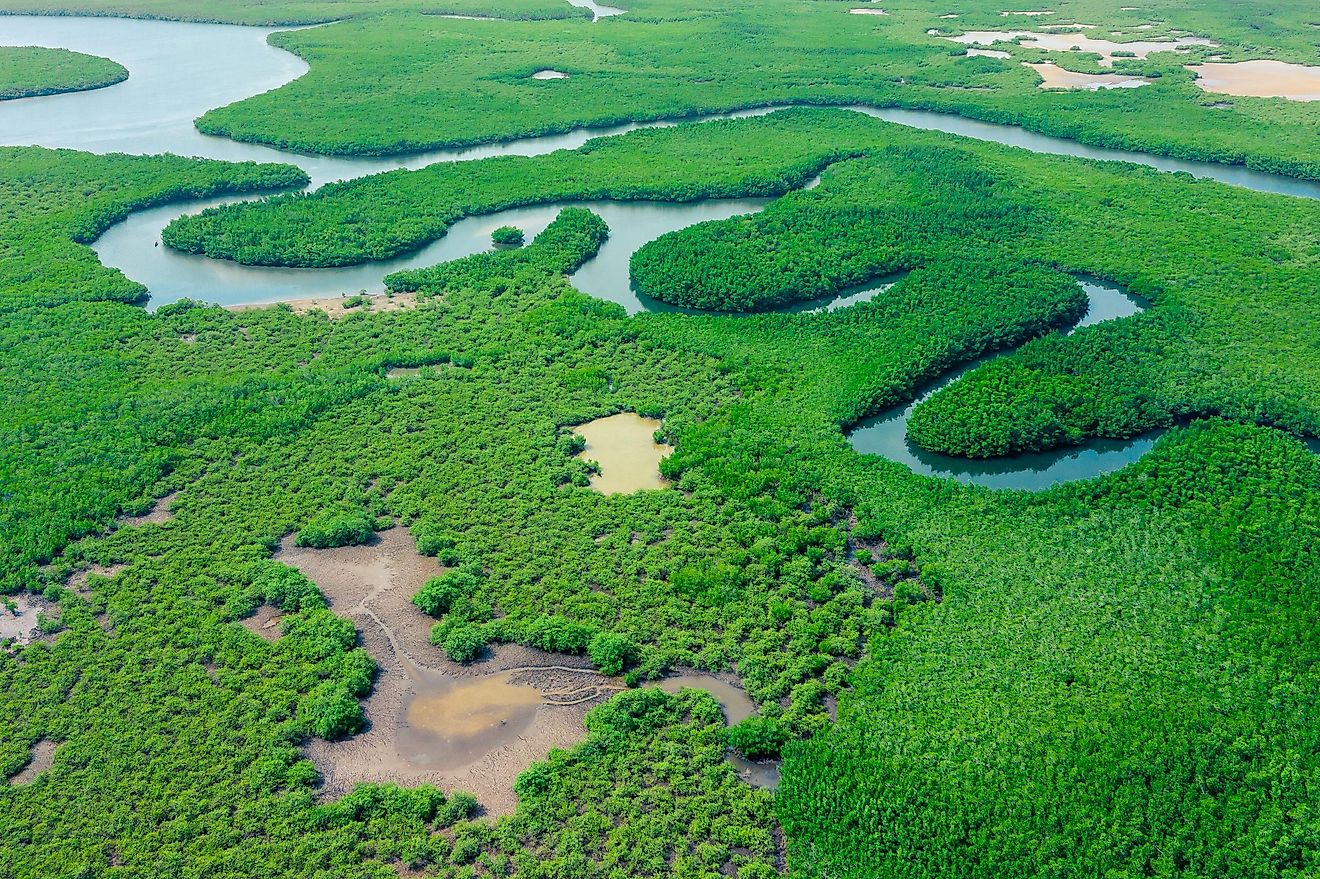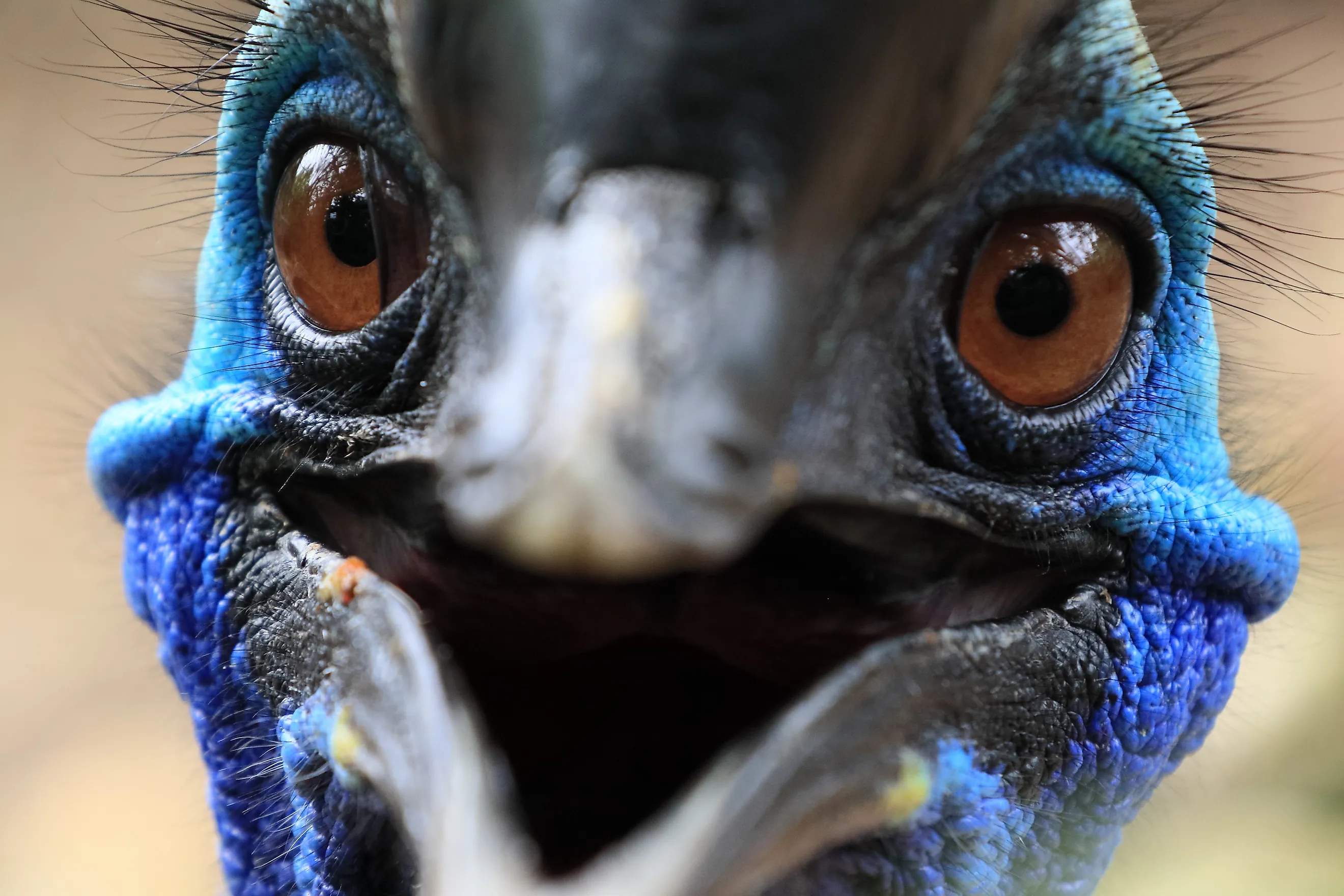
The World's Largest Birds
Birds are an incredibly varied species of animal. The size, appearance, and role the bird plays in the ecosystem can change drastically depending on the type of bird or the region it inhabits. The Ostrich is easily the largest bird in the world, weighing in at up to 346 lbs for some males and standing at 9 feet tall. For comparison, the largest bird that ever existed is the now-extinct (and similarly flightless) Aepyornis, which weighed between 610 lbs-2,200 lbs and stood 9.8 feet tall. Behemoth birds truly come in all shapes and sizes, so read on to take a look at what nature has created for this day and age.
The 10 Largest Birds In The World
| Rank | Name | Average Mass | Location |
|---|---|---|---|
| 1 | Ostrich | 229 lb (104 kg) | Africa |
| 2 | Cassowary | 99 lb (45 kg) | Australia and Papua New Guinea |
| 3 | Emu | 73 lb (33 kg) | Australia |
| 4 | Emperor Penguin | 69 lb (31.5 kg) | Antarctica |
| 5 | Greater Rhea | 51 lb (23 kg) | South America |
| 6 | Turkey | 30 lb (13.5 kg) | North America |
| 7 | Trumpeter Swan | 28 lb (12.7 kg) | North America |
| 8 | Wandering Albatross | 26 lb (11.9 kg) | Southern Hemisphere |
| 9 | Dalmatian Pelican | 25 lb (11.5 kg) | Eurasia |
| 10 | Andean Condor | 25 lb (11.5 kg) | South America |
1. Ostrich
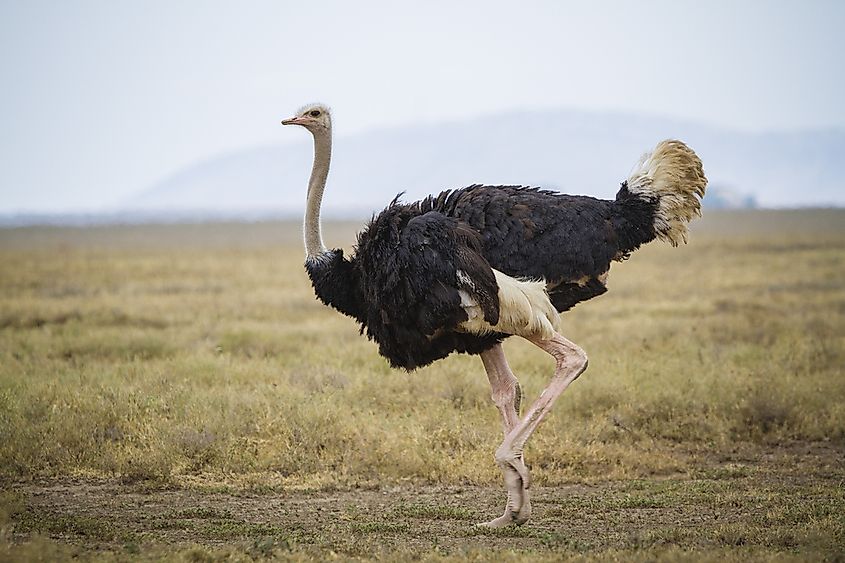
Officially the largest bird on Earth, the mighty ostrich can grow to stand at a staggeringly tall 9'1" (2.8m.) Found across Africa, these massive birds are famous for their strange and uncanny appearance.
Their long necks, bald heads, long legs, and incredible running speed, make them one of the most unique-looking animals on the planet. Ostrich's are famously flightless birds meaning that they are limited to running across the African savannah like any other mammal.
Ostriches are largely herbivores aside from eating insects. On rare occasions, ostriches are known to feed on the carcasses of animals. Ostriches are mostly defenseless and rely on their speed to evade being attacked. However, if cornered, they are known to kick and gouge preditors with a large talon that they have fixed to their feet.
2. Cassowary
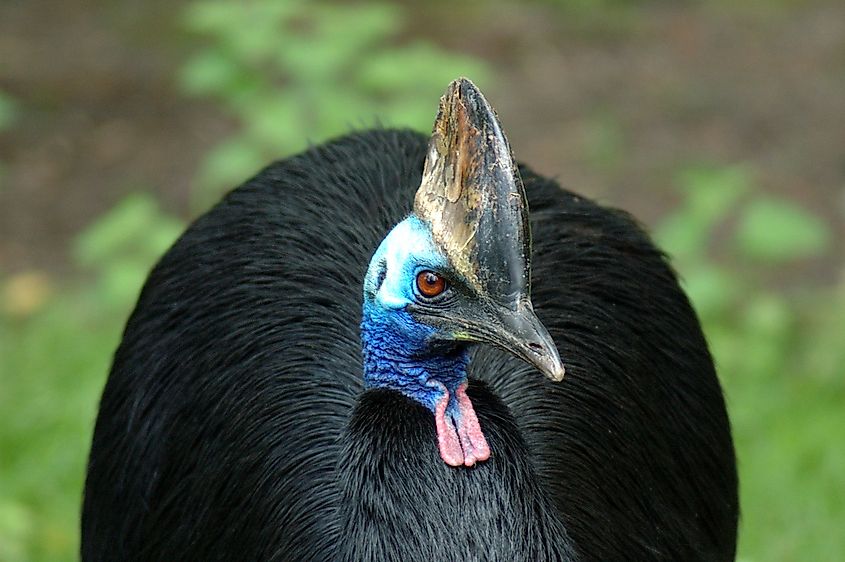
Mostly found in Papua New Guinea and Northern Australia, the cassowary is just one in the long list of animals that are only found in this part of the world. The cassowary is another flightless bird. Unlike the emu or ostrich, the cassowary is not particularly quick.
The cassowary's body is covered in long black feathers. Its head is often decorated with a series of colorful stripes and patterns. They can grow up to 6ft (190 cm) in height and 185 lbs (85 kg) in weight.
Cassowaries mostly eat fruit, fungi, and insects but are known to eat small animals on occasion. They are typically quite aggressive birds and will charge humans and other animals if feeling threatened.
3. Emu

Only found in Australia, the emu is the third largest bird on Earth. Weighing roughly 100lbs (45kg) and standing at an impressive 5ft (1.5M), the emu often towers over other birds and even some humans.
An emu's build is similar to an ostrich. Emus have a short torso that connects to a long and slender neck as well as two long skinny legs. The emu is also flightless but compensates for this with its fast run speed.
Emu's tend to eat fallen fruit and insects but are also known to graze on crops such as wheat and barley. This has made them quite a nuisance for the Australian farmer. On various occasions, the Australian government has ordered large-scale culls of emus as a way to protect the nation's crops.
4. Emperor Penguin
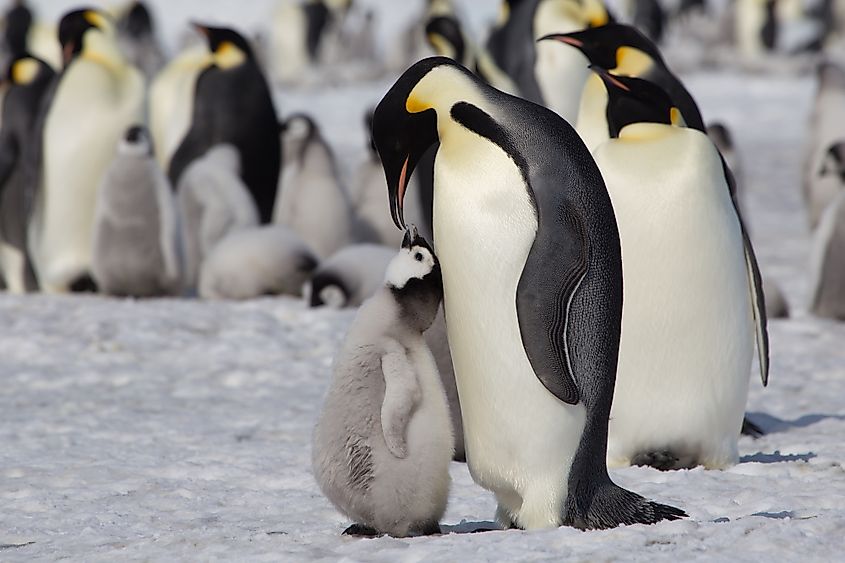
The largest of all penguins, the emperor penguin can grow as large as 4ft (114cm) tall and weigh as much as 100 lbs (46 kg.) Living in the southernmost continent of Antarctica, the emperor penguin has little in the way of natural predators aside from leopard seas that lurk in the water.
Emperor penguins famously travel along the frozen surfaces of their environment by sliding along their stomachs. If they are not sliding across ice or snow, they are awkwardly waddling to their destination.
While they are flightless birds, emperor penguins are expert swimmers and almost exclusively eat fish. Krill and squid can also wind-up on the menu but this is somewhat uncommon.
5. Greater Rhea
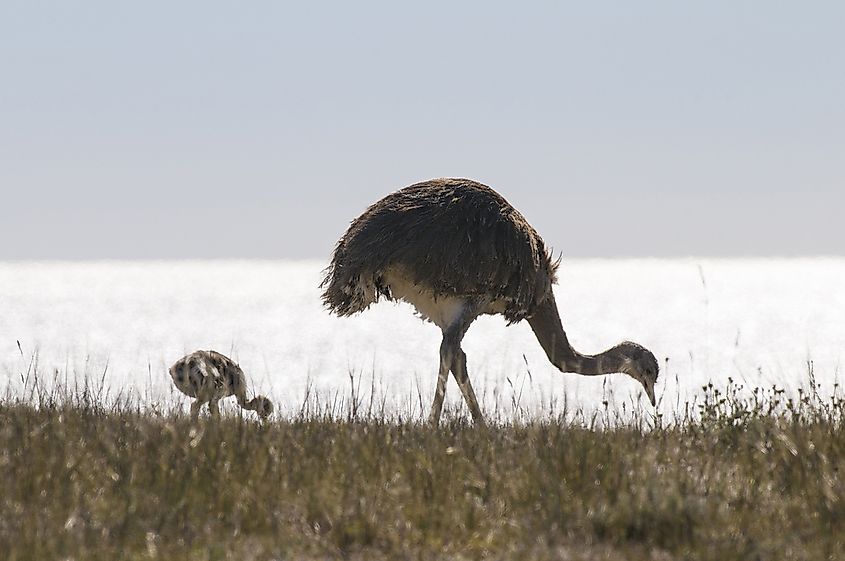
The greater rhea can be found only in South America in places like Brazil, Argentina, Paraguay, and Uruguay. Sharing many similarities with emus, ostriches, and cassowaries, the greater rhea is considered to be a part of the same family of birds.
The greater rhea has short brown and grey feathers and a long pale neck. They weigh on average 50 lbs (22.6 kg) and can grow as tall as 4.11 ft. (1.2m.) Their diet is quite diverse. They eat fruit when they can but are known to feast on insects, small rodents, and even other birds.
Greater rhea and notoriously quiet birds. They make nearly zero sound unless they are calling for a mate. They move silently as well. It is a good thing greater rhea are generally friendly towards humans, or else most South Americas would have to be constantly looking over their shoulders in the look of a quiet and angry human-sized bird
6. Turkey
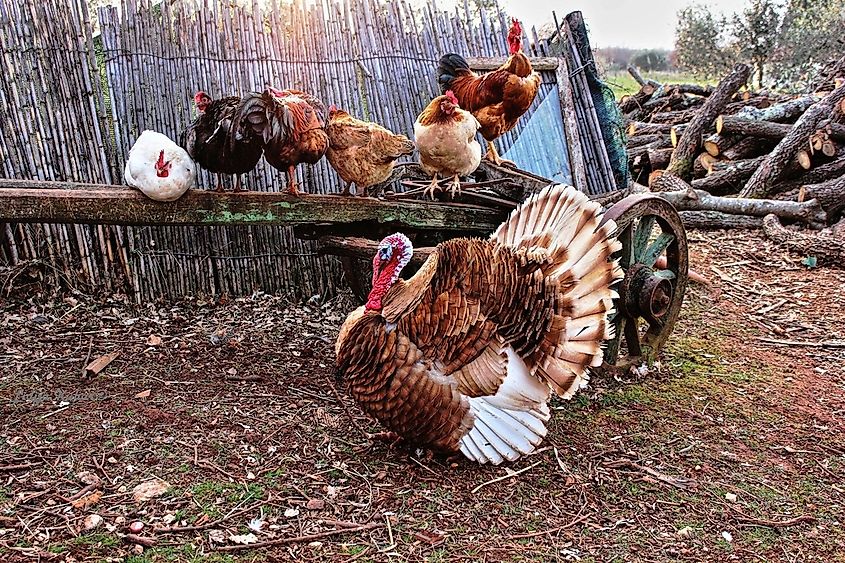
Native to North America, turkeys can be found in Canada, the United States, and Mexico. Another flightless bird, turkeys are best known for being a favored meal for large holidays like Christmas, Thanksgiving, and Easter.
Turkeys are decorated with brown and black feathers. On its wings and tail, however, the colors often change to white and black, sometimes even blue. The most distinguished part of a turkey's appearance is undoubtedly its red and blue neck.
Turkeys are famously unable to fly. Stuck to walking on the ground, turkeys can grow quite big. The average turkey grows to about 4 ft (1.2 m) in height and 25 lbs (11 kg) in weight, although the weight can nearly double if the turkey comes from a farm rather than the wild
7. Trumpeter Swan
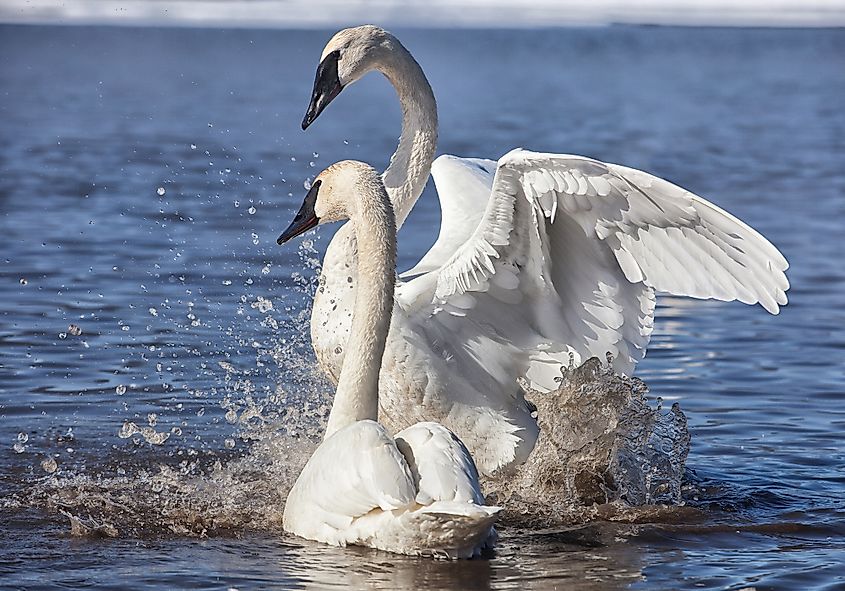
Common across most of North America, the trumpeter swan is one of the most easily recognizable birds in the United States. The trumpeter swan is the largest bird in North America and migrates across the vast continent each year to breed and find new food sources.
Known for their white feathers and black and orange bills, the trumpeter swan is often regarded as one of the more beautiful species of birds. Despite being famous for their pure white feathers, young trumpeter swans are born with brown and grey feathers before they are slowly replaced as they enter adulthood.
Trumpeter swans often breed in places like Alaska, Alberta, and the American Mid-West before breaking off towards the Great Lakes and the Pacific Coast for the rest of the year. Their migration is far from subtle. Swan flocks can consist of hundreds of birds.
8. Wandering Albatross
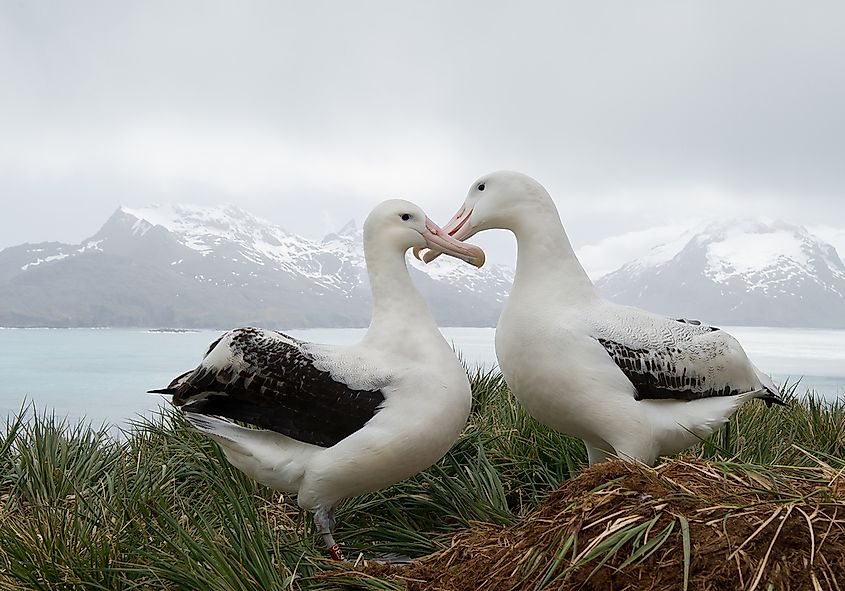
The wandering albatross is the largest subspecies of the albatross. This particular species can be found primarily across the Southern Pacific Ocean in South America, Australia, and Southern Africa.
The wingpan of the wandering albatross is truly enormous. When this bird takes flight, from tip to tip, it can measure as much as 11ft. On average they weigh as much as 25lbs but can grow much larger.
The wandering albatross gets its name from the immense distances that it covers each year. Some birds have been reported to cover the entire length of the Southern Pacific three times in a single year. That is a total area of 75,000 mi (120,000 km.)
9. Dalmatian Pelican

Thought to be the world's largest freshwater bird, the Dalmatian pelican can be found across much of Asia and Southern Europe. The Dalmatian pelican migrates across Eurasia throughout the year and can often be spotted in lakes and ponds.
Roughly 5.7 ft (1.7 m) in height and weighing as much as 33 lbs, the Dalmatian pelican is truly massive. Its wingspan is something to behold as well. A full-grown Dalmatian pelican can have a wingspan measuring 11.6 ft (3.5 m.) This rivals the wingspan of even the mighty albatross.
Dalmatian pelicans are easy to spot thanks to their bright white features and long orange bills. The bills of pelicans are famously shaped to help the first store fish and other food. Being so close to the water, it should be no surprise to hear that the Dalmatian pelican's diet consists almost exclusively of fish.
10. Andean Condor
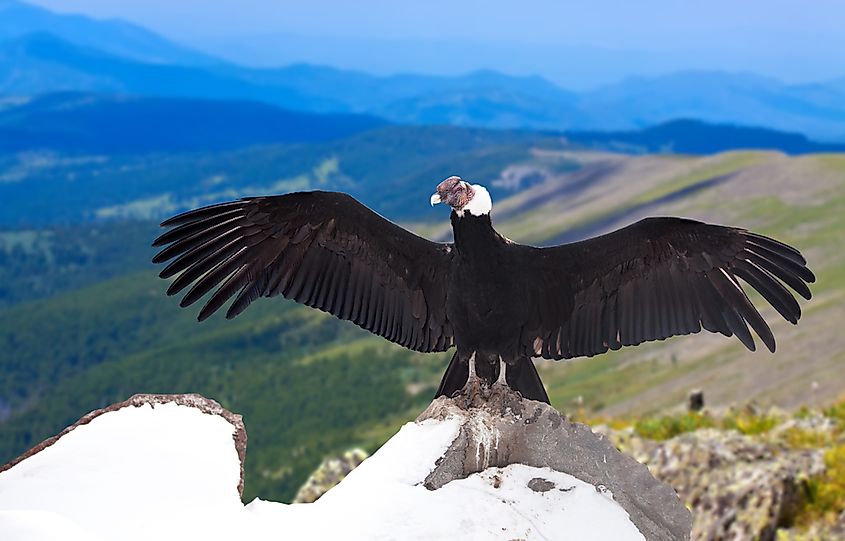
The Andean condor is a type of vulture that lives in South America. Named after the mountain range in which it lives, these birds tend to congregate along the vast Andes Mountain Range. The Andean condor is considered to be the largest bird of prey on Earth.
The Andean condor is by no means the tallest bird on the planet, but its wingspan is massive. When fully stretched out, the wingspan of the Andean condor can reach a staggering 11ft.
The bird's feathers are primarily black, with white feathers located at the base of the neck and on the tips of its wings. Its head is usually completely featherless, exposing its pinkish-red skin. The color of its head can change depending on its mood.
Final Thoughts
Day truly turns into night when one of these winged creatures crosses overhead. However, not all of these behemoth birds can fly. For each creature, evolution has granted astounding characteristics and defenses like colors and claws that function perfectly with their increased size. The only question that remains is what these species will look like millions of years from now: will they become larger or smaller? So, it seems that future scientists and animal enthusiasts will have plenty of work to do.
